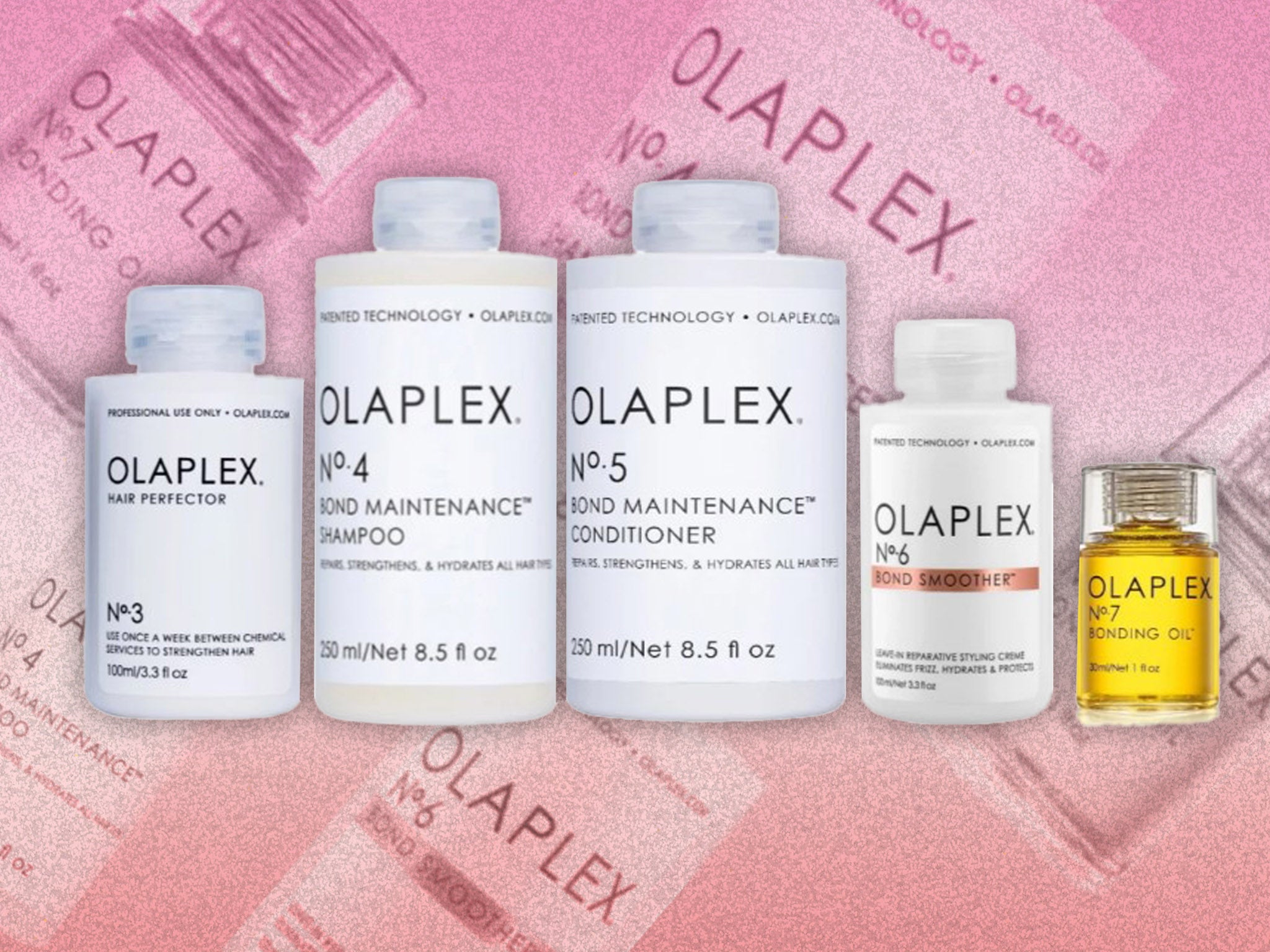The Independent's journalism is supported by our readers. When you purchase through links on our site, we may earn commission.
Olaplex: How the world’s most sought-after haircare giant fell from grace
It achieved cult status on TikTok and became the best-selling hair care product in the world. Now, Olaplex has been shaken by an ingredient ban and a lawsuit. Will the brand overcome its recent controversy, or will the internet declare a new winner in hair care before it’s too late? Meredith Clark reports

Imagine being able to achieve salon-ready hair after every wash, right in the comfort of your own home (or in this case, shower). That was the promise of Olaplex – a luxury hair care brand coveted by both celebrities and hairdressers.
Now, the popular company is embroiled in a string of controversies and scandals. A new lawsuit claims customers have suffered from hair loss, bald spots, blisters, and scalp injuries from using the once-beloved product.
Built from founder Dean Christal’s garage in Santa Barbara, Olaplex’s line of professional products officially launched in 2014 exclusively to be used by hairdressers and salons. Four years later, the brand debuted its at-home range and quickly became Sephora’s best-selling hair product.
The ethos was simple. A multi-step process backed by science to repair, rebuild, and restore hair damage using its single patented ingredient, Bis-Aminopropyl Diglycol Dimaleate. The original take-home formula that put Olaplex on the map was the No. 3 Hair Perfector, followed by its “Bond Maintenance” shampoo and conditioner line, its leave-in treatment, and the No. 7 Bonding Oil.
Then, TikTok caught wind. The verified Olaplex account amassed more than 300k followers on TikTok, while the #olaplex hashtag has received over a billion views. It became the subject of viral trends with the Olaplex bun beauty hack and the brand even enlisted influencers to take part in its #OlaFlex campaign.
In 2021, Olaplex claimed victory over Dyson as the hottest hair brand in a report by Cosmetify. The sales of its bond-building hair care products increased from $148.2 million in 2019 to $282.3 million in 2020, according to The New York Times. And in September 2021, the brand went public and was valued at $14 billion.
So, what went wrong?
It all began last March when Olaplex was forced to remove the ingredient lilial from its best-selling product, the No.3 Hair Perfector, after a ban was issued on the ingredient for its links to infertility.
Lilial, also known as butylphenyl methylpropional, is a fragrance used in many cosmetics and household cleaning products. However, a scientific committee on consumer safety for the European Commission found in a 2019 study that the fragrance compound “cannot be considered as safe” because it proved to adversely affect reproductivity.
As quickly as Olaplex rose to fame on TikTok, the ban on lilial caused concern on the app as once-loyal consumers completely swore off Olaplex over fears that it might cause infertility issues.
Both Olaplex and haircare experts have since warned customers not to throw out all their Olaplex products, noting that the study on lilial was conducted on animals, and no studies have been conducted to assess the effect of lilial on human reproductivity.
In a statement to TheIndependent, Olaplex said that it had removed lilial from its No 3 Hair Perfector across the globe, adding that Olaplex products containing lilial had not been sold in the UK since January.
“At Olaplex, lilial was previously used in small amounts as a fragrance in No 3 Hair Perfector. It is not an active or functional ingredient,” a spokesperson said at the time.
The controversy died down and Olaplex seemed to be in the clear. That is, until 30 women filed a lawsuit on 9 February claiming that the company’s products caused “serious injury” to their hair.
The women alleged that Olaplex – specifically its No. 0 to No. 9 products – caused hair loss, breakage, bald spots, and scalp irritation. The plaintiffs are collectively seeking more than $75,000 in damages.
Olaplex denied these claims in a statement to The Independent, and maintained that its “products are safe and effective, as millions of our customers can happily attest”.
“We have full confidence and believe in the safety and efficacy of our products,” they said. “There are a wide variety of reasons for hair breakage or hair loss, as medical and scientific experts have publicly stated, including lifestyle, various medical conditions and medications, the aftereffects of COVID, skin conditions and more. Anyone experiencing consistent hair breakage should consult their stylist and dermatologist to best understand their unique hair and skin needs. We are prepared to vigorously defend our Company, our brand, and our products against these baseless accusations.”
Despite the lawsuit, Olaplex will seemingly fight to maintain its spot as the most coveted hair care product in stores and on social media. In the meantime, perhaps a new viral hair treatment will reign supreme. Our money is on Redken.
Subscribe to Independent Premium to bookmark this article
Want to bookmark your favourite articles and stories to read or reference later? Start your Independent Premium subscription today.

Join our commenting forum
Join thought-provoking conversations, follow other Independent readers and see their replies